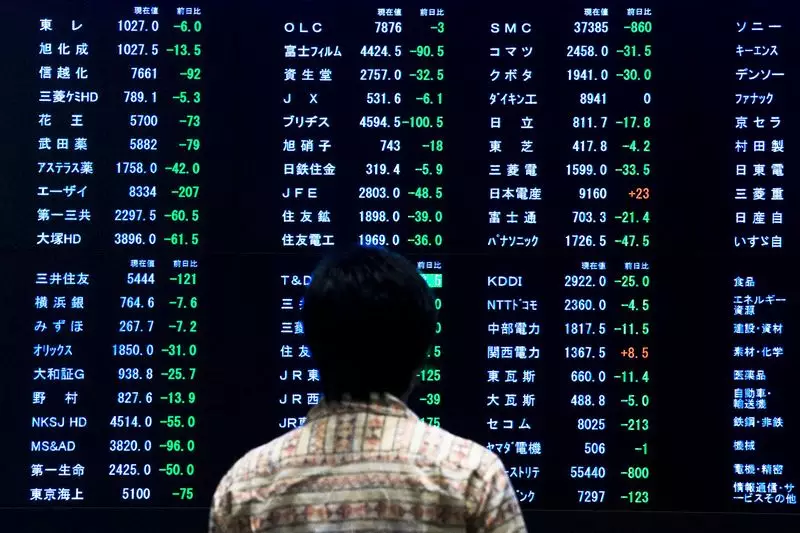On a seemingly inconspicuous Friday, the Asian stock market exhibited a mixed bag of performances, reflecting the complex interplay of economic factors across the region. In Japan, a notable surge in the Nikkei 225 index, which climbed 1.5%, indicated an optimistic investor sentiment driven primarily by a stronger-than-expected inflation reading from Tokyo. This uptick not only spotlighted the resilience of Japan’s economic recovery narrative but also intensified speculation around potential interest rate hikes by the Bank of Japan (BoJ).
The December Consumer Price Index (CPI) data suggested that inflation pressures in the capital region were more pronounced than analysts had anticipated, with rising prices likely prompting BoJ policymakers to reconsider their long-standing commitment to ultra-low interest rates. In light of this information, one member of the BoJ even forecasted a possible rate adjustment “in the near future.” The official data, while signaling a rebound of sorts, also showed a contraction in factory output; however, this decline was less severe than predictions, hinting at a nuanced recovery as demand from abroad wavered.
Meanwhile, across the Pacific, U.S. stock index futures remained relatively stagnant during Asian trading hours, providing little directional guidance for investors. Wall Street’s recent performance was characterized by thin trading volumes, dampening the overall market enthusiasm. The broader implication for Asian markets rests upon the global economic sentiment, which remains cautious yet watchful. Investors are particularly keen on interpreting the signals from U.S. economic indicators and monetary policies, as these will inevitably affect Asian economies.
Despite the lack of major movement from U.S. markets, Japan’s performance was buoyed by notable gains in key sectors, particularly the automotive industry. Companies such as Toyota Motor Corporation benefited from a favorable exchange rate scenario, as a weaker yen typically makes exports more competitively priced in the global market. This change resulted in a more optimistic outlook for Japanese manufacturing, albeit tempered by ongoing challenges related to foreign demand.
In mainland China, positivity emerged amidst the challenges facing its economy. Both the Shanghai Composite Index and the CSI 300 advanced modestly, by 0.3% and 0.4% respectively, illustrating some resilience. This was buoyed by a slower-than-expected decline in industrial profits, a data point released on the same day. However, the prevailing sense of caution remains, as internal demand struggles continue to impede efforts for a robust recovery.
Compounding these concerns, the World Bank has recently raised its economic growth forecasts for China in 2024 and 2025, emphasizing an important detail: optimism must coexist with the reality of weak consumer and business confidence, particularly as the property sector grapples with profound challenges. As investors scrutinize government stimulus measures in the pipeline, there is hope that increased fiscal spending could inject vitality into the stagnant sectors.
Conversely, South Korea’s KOSPI index faced a sobering decline, falling over 1.5% and marking its third consecutive day of losses. The catalyst for this downturn lies in the political upheaval currently enveloping the nation. Acting President Han Duck-soo’s impending impeachment vote has created an atmosphere of uncertainty, further compounded by the implications of a prior short-lived martial law.
With allies expressing alarm over the potential ramifications for the country’s democratic integrity, investors are bracing for possible instability that could disrupt economic conditions. Such political crises can foster investor wariness, stirring fears that governance issues may overshadow economic initiatives and growth prospects.
The Asian stock market’s performance on this Friday vividly illustrates the dichotomy of optimism and uncertainty. Japan’s bolstering economic signals stand in stark contrast to South Korea’s political turmoil, while China’s mixed signals regarding growth continue to cast a shadow over investor sentiment. As traders navigate this sea of economic data and political developments, an overarching theme emerges: the importance of remaining vigilant and adaptable in an environment characterized by volatility and rapid change. Analysts and investors alike will need to wield a keen eye on further developments, readying themselves to respond to shifts that could redefine market trajectories in the near future.

